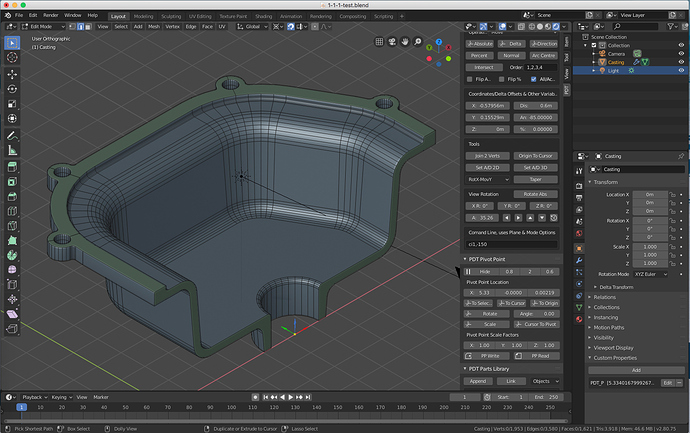OK, I feel like I should “shake the hornet’s nest” a little. Whilst I agree with all the comments and proposals to improve snapping, by this I presume we all mean that the chosen vertex, or object, or vertices will go somewhere useful when we start moving, or extruding things, I am also of the opinion that we need to be able to place the cursor at useful locations prior to a process being initiated.
From my experience, it can be far more productive to place the cursor exactly where you want it then do something, rather than always rely on all the snapping tools to move things during a process, or create something then move /rotate it where you want it. I would like to be able to tell Blender where I want the cursor, by keying absolute, delta, or directional information through a simple system of cursor placement. I do not want to have to key values, tab between X, Y & Z and input sine, cosine and tangent functions to imitate directional vectors, having previously clicked = to get advanced input mode - such an awkward system when keying I2.3,27 could mean 2.3 units at 27 degrees in view plane, or D1,5,3 could mean delta 1 in X, 5 in Y and 3 in Z from existing location & A1.2,5,2.5 could mean absolute, or global coordinates. I could use these key-ins to move the cursor, move objects/vertices, or extrude geometry, etc.
The ability to “snap” or cursor locate to the midpoint along an edge is nice, but why not use a fraction, or percentage instead and why not be able to use two unconnected vertices rather than just an edge? After all midpoint is a very limited example of the more universal percentage and 50% is still the midpoint, even in these days of poor mathematical attainment by school children… (I qualify this remark by asking how many understand calculus by the age of 15?, how many know how to calculate pi by age of 13? etc. etc.). then there are intersections, including normal (perpendicular if you prefer) and planar intersections of converging lines, either physical from edges, or implied from vertices.
Also, we need to be inclusive of all genres of CAD users, including Mechanical Engineers, Electrical Engineers, Architects, Civil Engineers, etc. etc. I notice that a lot of work issuing done and targeted at specific genres, whereas its would have better appeal if all this “CAD” stuff was targeted across the board. To this end we also need “Parts Libraries” designed similar to Pose Libraries, but with geometry in them, like standard electronic parts for circuit board designers, as a simple example.
We also need to “pool” our ideas into a single source to avoid duplication of effort…
Let’s see how many hornets get p***ed off with the nest shaking. The broader the appeal of this work, the more likely it is to get into Blender, unless the Devs disagree…
Cheers, Clock. 





